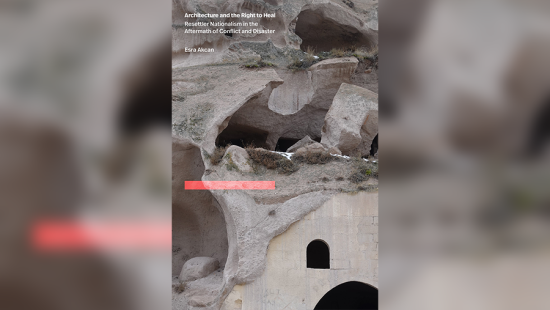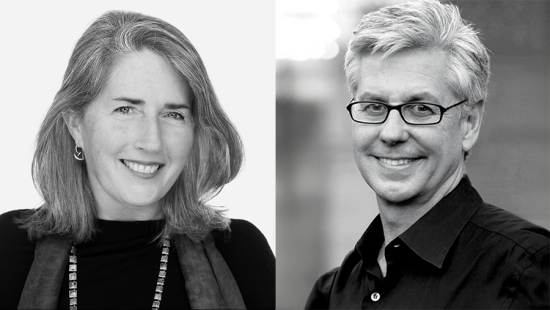The Gensler Family AAP NYC Center welcomed architect and founder of Practice for Architecture and Urbanism (PAU) Vishaan Chakrabarti to the faculty this semester as the Thomas J. Baird Visiting Critic. In this capacity, Chakrabarti led Master of Science in Advanced Urban Design students in The Fundamentals of Urban Design, the first in a series of the degree program's studio courses that prepares students to explore, analyze, and develop design ideas in an urban context and effectively collaborate and communicate them to stakeholders. Chakrabarti's professional career spans involvement in many complex and high-profile design and planning projects in major urban hubs — including Brooklyn's Domino Sugar Refinery, Cleveland's Rock and Roll Hall of Fame, and New York's Pennsylvania Station — which positions him to share a deep range of professional experience.
Not for the Faint of Heart: Vishaan Chakrabarti on Urbanity, Social Uplift, and the Power of Design
Chakrabarti joined Cornell AAP this semester as the Thomas J. Baird Visiting Critic to share his vast knowledge and practical experience improving cities and communities with NYC-based Advanced Urban Design students.

Vishaan Chakrabarti. image / provided


PAU's design for the adaptive reuse of Brooklyn's Domino Sugar Refinery nested a new building inside the original masonry. images / Max Touhey, courtesy PAU
"I arrived at Cornell as a confused teenager in 1983 who had enrolled as an engineering student, mainly in an effort to be a good Indian boy," Chakrabarti recalls. Freshman course requirements led him toward art electives and, ultimately, to a dual bachelor's in both engineering and art history in 1988 with the aid of many coffees consumed in the Green Dragon. He acknowledges that "while it was a struggle to achieve both and bridge the cultural divide between the two departments and pedagogies, it was navigating that interdisciplinary crucible that forged and foreshadowed the rest of my nonlinear career," work that has now come to interweave the practice of architecture, writing, and research.
This fall, Design Philadelphia celebrated the impact of Chakrabarti's career and commitment to addressing societal challenges through his work by naming him a 2025 Edmund N. Bacon Honoree. His latest book, The Architecture of Urbanity: Designing for Nature, Culture, and Joy (Princeton University Press, September 2024), dives deeply into the role design can and should play in addressing major social and environmental issues. It follows Chakrabarti's A Country of Cities: A Manifesto for an Urban America (Metropolis Books, 2013), and he says that "in many ways my latest book is an argument with my first, which was a somewhat technocratic narrative about the merits of density. The second book is much more about design and culture, specifically focused on the experiential uplift and positive social fiction urbanity can bring when formed through connective architecture and urbanism."



images / courtesy Princeton University Press
These are ideas he has also brought into the classroom this semester, though not exclusively. Teaching alongside PAU colleagues Maria Lucia Morelli and Junxi Wu, Chakrabarti says that while such issues certainly came up, the imperative was to teach students the fundamentals in their first semester and offer them a broad exposure to the theories and methods of urban design.
"The design of urban spaces is a profoundly complex process, requiring an understanding of diverse and interwoven factors," Morelli agrees. "We wanted to lay a strong foundation, equipping students with the skills and tools to analyze, visualize, and balance these elements thoughtfully and creatively. Our syllabus mirrors the methodology we employ in practice, guiding projects from rigorous analysis through concept development, iterative refinement, and final design. Alongside technical skills, we have aimed to cultivate a deep curiosity about urban theory, methods, and the historical layers of the city — because sustaining this sense of curiosity is the most powerful tool for addressing the evolving challenges of our time."
Greenery Hushline by Haoyuan Kuang (M.S. AUD '25).

Greenery Hushline by Haoyuan Kuang (M.S. AUD '25).

Transitional Program by Wenshan Luo (M.S. AUD '25).

Transitional Program by Wenshan Luo (M.S. AUD '25).

Transitional Program by Wenshan Luo (M.S. AUD '25).

Elevate Sunnyside by Yuki Zhang and Yifan Liu (both M.S. AUD '25).

Elevate Sunnyside by Yuki Zhang and Yifan Liu (both M.S. AUD '25).

Greenery Hushline by Haoyuan Kuang (M.S. AUD '25).
In pursuing their ideas I have encouraged them to be as fearless as possible, because what we do is not for the faint of heart. — Vishaan Chakrabarti
Coming from an architectural background, Haoyuan Kuang (M.S. AUD '25) appreciated that the class "helped me quickly establish an efficient urban design workflow, whether it be in terms of software, design, theory, or hands-on practice. Efficiency and precise output of results is what Vishaan always emphasizes. He is always asking us: What is your argument? He guides us to extract the effective parts of the information and simplify it to form a clear point of view, which is often reflected in a series of concise, powerful, and self-explanatory drawings."
"The students did great, fascinating, divergent work that is about what they and their generation want to bring to the table," Chakrabarti observes. "There are very strong environmental and equity concerns expressed in most of the student projects, regardless of the student's origins and background. I find this heartening, and yes, I guide them towards their own interests, often reminding them of where they started their projects and to make sure they assert themselves in their work while of course considering community and other local concerns. In pursuing their ideas I have encouraged them to be as fearless as possible, because what we do is not for the faint of heart."

Wenshan Luo (M.S. AUD '25) presenting during midterm reviews. image / provided

Xiaofan Zhu (M.S. AUD '25) speaking with Chakrabarti about her work. image / provided
Learn More and Apply to the M.S. AUD Program
Directed by Jesse LeCavalier at the Gensler Family AAP NYC Center, the Master of Science in Advanced Urban Design is an NYC-based program that prepares graduates to engage pressing urban, environmental, and social issues with the tools of design. It offers a specialized course of study at the intersection of urban systems, ecologies, technologies, and data that immerses students in the city to ask big questions, address challenging contemporary problems, and invigorate public realms. Applications for fall 2025 entry to the M.S. AUD program are due January 3.









